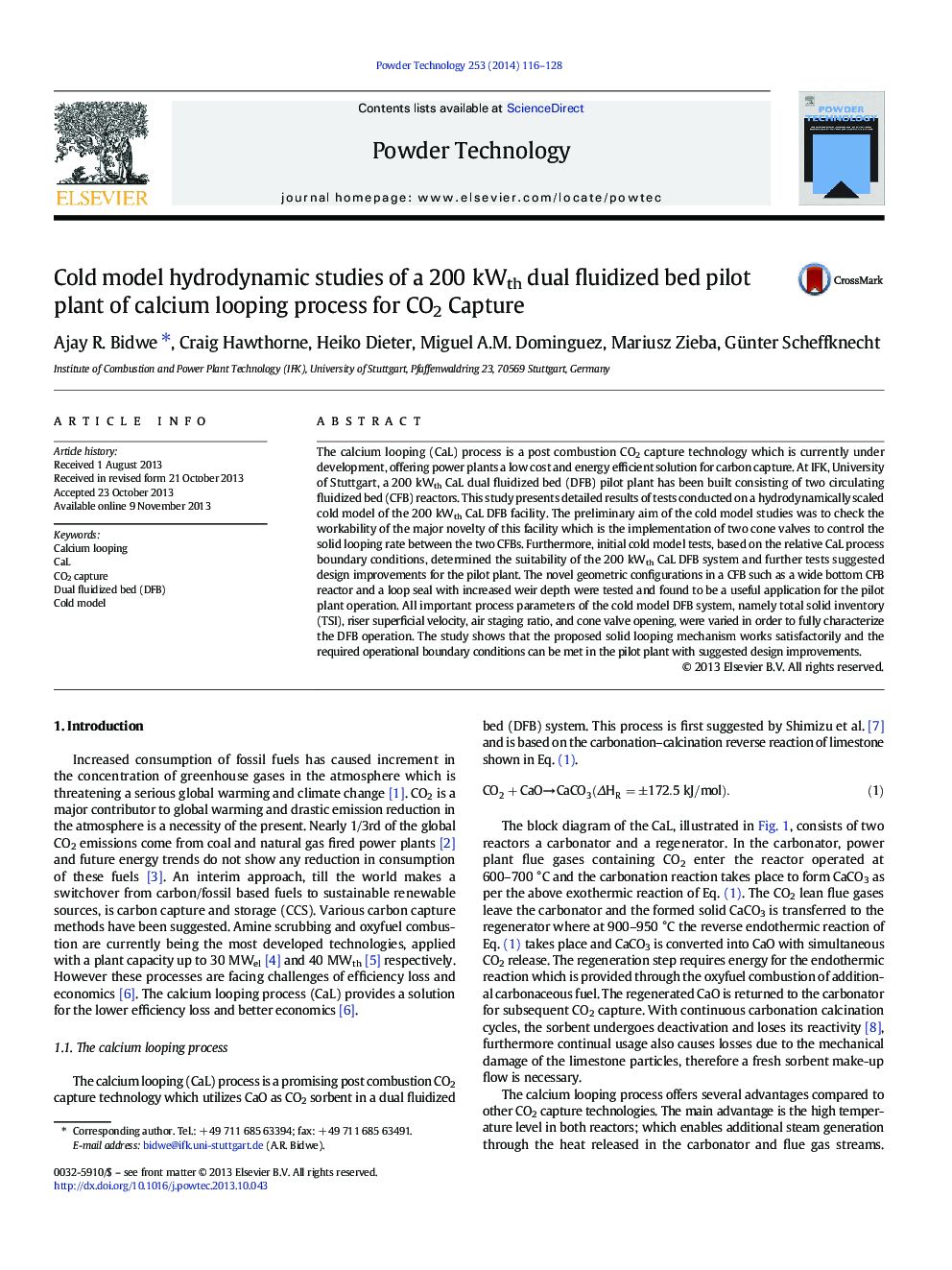| Article ID | Journal | Published Year | Pages | File Type |
|---|---|---|---|---|
| 236439 | Powder Technology | 2014 | 13 Pages |
•A novel cone valve coupled CFB–CFB type DFB system was designed for calcium looping.•The hydrodynamics of the DFB pilot plant was studied in cold model using similarity.•Riser pressure profiles, entrainment rates, and cone valve flows were studied in detail.•Steady DFB operation and certain boundary conditions for CaL were fulfilled.•For certain conditions not achieved design changes for pilot plant were suggested.
The calcium looping (CaL) process is a post combustion CO2 capture technology which is currently under development, offering power plants a low cost and energy efficient solution for carbon capture. At IFK, University of Stuttgart, a 200 kWth CaL dual fluidized bed (DFB) pilot plant has been built consisting of two circulating fluidized bed (CFB) reactors. This study presents detailed results of tests conducted on a hydrodynamically scaled cold model of the 200 kWth CaL DFB facility. The preliminary aim of the cold model studies was to check the workability of the major novelty of this facility which is the implementation of two cone valves to control the solid looping rate between the two CFBs. Furthermore, initial cold model tests, based on the relative CaL process boundary conditions, determined the suitability of the 200 kWth CaL DFB system and further tests suggested design improvements for the pilot plant. The novel geometric configurations in a CFB such as a wide bottom CFB reactor and a loop seal with increased weir depth were tested and found to be a useful application for the pilot plant operation. All important process parameters of the cold model DFB system, namely total solid inventory (TSI), riser superficial velocity, air staging ratio, and cone valve opening, were varied in order to fully characterize the DFB operation. The study shows that the proposed solid looping mechanism works satisfactorily and the required operational boundary conditions can be met in the pilot plant with suggested design improvements.
Graphical abstractFigure optionsDownload full-size imageDownload as PowerPoint slide
